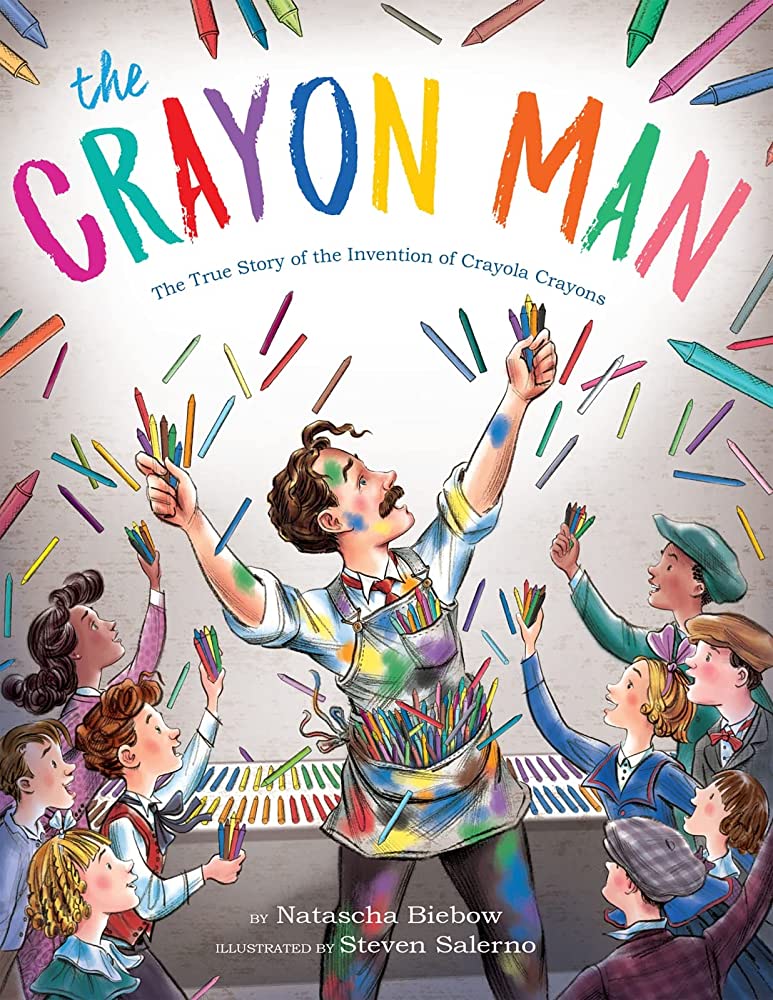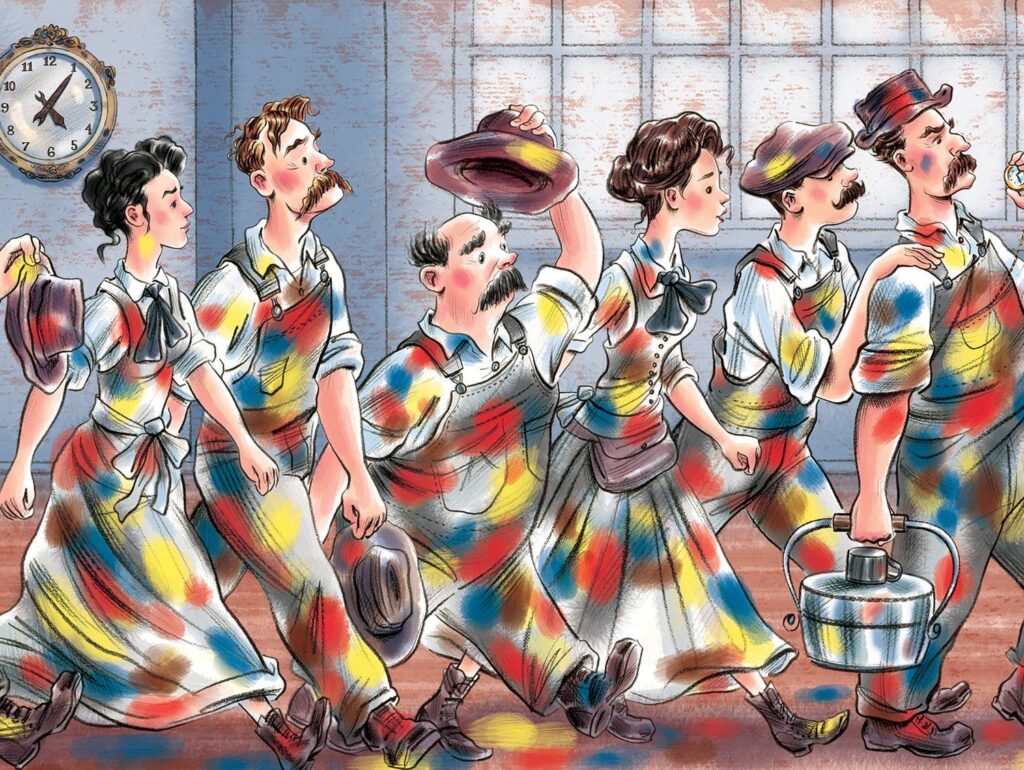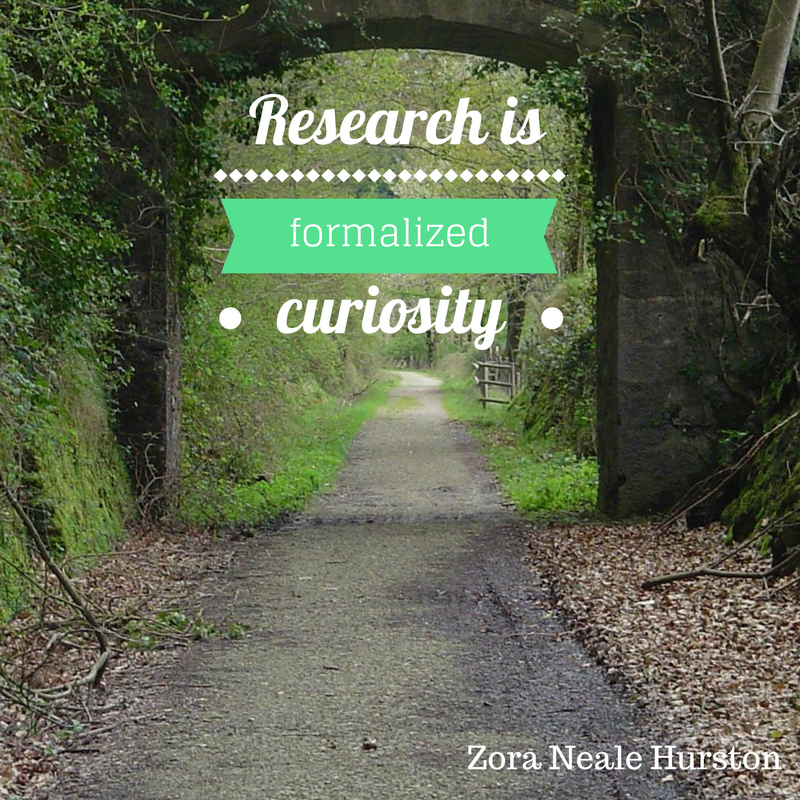
Why I Picked It Up:
I found this book as a result of a Crayola obsession, biography madness, and an author visit. Anyone who has been to our sessions knows that we love biographies. We love that it provides a little historical insight, and we love learning about people’s persistence and accomplishments, but mostly we love all that you can teach with a strong biography. This one is no exception.
Why I Finished It:

Many times we take simple objects for granted, so to read about the Crayola crayon from idea to success was really intriguing. The story flows through the invention, providing insight into Edwin Binney’s family life and professional life. The illustrations by Steven Salerno are engaging, vibrant, and historically normed. You notice them immediately, and it will even draw you to the story itself, but Natascha spoke about the historical significance of the drawings during her author’s visit. I found myself going back through the book and paying attention to the clothing, the surroundings, and other small details. If you have the opportunity to have Natascha Biebow visit your school, definitely do so. I enjoyed the story the first time I read it, but after her explanation of her research process, the illustrator’s decisions, and learning more about Edwin Binney, I reread the story with a new lens. She had the same effect on all our students and many have decided to write their own biographies after listening to her speak.
Who I Would Give It To:
This is a great addition to any biography or inventor unit. Students as young as four are familiar with Crayola crayons, so they will be automatically drawn into the story of how they came to be.
Intervention Ideas:
Art, Language, and Science: Color Naming, Mixing
We learned from Natascha that the colors of the crayons came from nature. In the story, we learn that dirt, flowers, and elements make the vibrant colors. Then they have unique names like “Robin’s Egg Blue,” “Macaroni and Cheese,” “Granny Smith Apple,” etc. We also learn that they had to do specialized mixing to get colors like orange, green, and violet. There are so many things we can bring into the classroom:
- Take the science route and teach about mixing colors. Depending on the age of your students you can discuss the difference between mixing color and light. Have students make logical guesses as to how to make certain colors. In table groups, hand out one crayon. Have the students read the color of the crayon and describe what color it is. For example, “Macaroni and Cheese” is orange. Then have the students decide what colors mixed together made their crayon. Show this video to help students understand color mixing. Then this video will have students create their own rainbow with only three crayons. Here is a documentation sheet to go with the video.
- Let students be creative and create colors by mixing existing colors and then come up with a new name for their color. Then they can write a story about the new color they created.
- Connect to other books with a color theme:
STEM: Design Process
This book explains the design process that Edwin Binney goes through to create Crayola crayons. This is a great book to use with a STEM unit. First, Binney, well his wife, explains the problem. The crayons that students have don’t cut it. They are messy, too light, and they break easily. So Binney and his team brainstormed ideas for other materials to use, and then they designed their plan. They tried, and tested, evaluated, and altered the recipe continuously until they made 8 fantastic crayons. Then he went through the marketing process and presented the items to kids.
If you’re looking for other books about creating things this post on If I Built a Car by Chris Van Dusen, has a whole list!


Math: Measuring, Reading: Following Directions
Yes, you can make crayons by melting down crayon shavings and freezing them. But you can also create beeswax crayons. This will require measurement and finding natural colors in nature. If you have the ability to do this project, here is the recipe. When students follow a recipe, they have to measure and follow directions. It’s really easy to interfere and guide the students, but this would be a great activity to have students troubleshoot on their own.
The Research Process

In the backmatter, there is a selected biography. Natascha lists primary and secondary sources she used to learn the story of Edwin. After discussing the research process with the students, and investigating the documents that were used for this book, have students choose their own invention to research. Have students use primary and secondary sources to find out information about their chosen inventions. Students should present their learning in a paper, timeline, or infographic.
- Kid Info – links on inventors and inventions
- America’s Library – a kid-friendly biography site from the Library of Congress
- Visionaries on Innovation – a collection of digital resources about current innovators from the Henry Ford Museum
- Invent.org – National Inventors Hall of Fame – Learn about famous inventors who have changed the world
- History.com – basic information about the origins of everything from cotton gins to video game systems
Compare and Contrast
The Today Show did a video of how crayons are made currently. Using a Venn Diagram, have students compare and contrast how Crayola crayons were made then vs. now. After, have each student write 3-5 sentences using sentence stems.
- In the beginning _____, but now ______.
- Just like when they were invented ______.
- ______ now, but in the beginning ______.






Leave a Reply